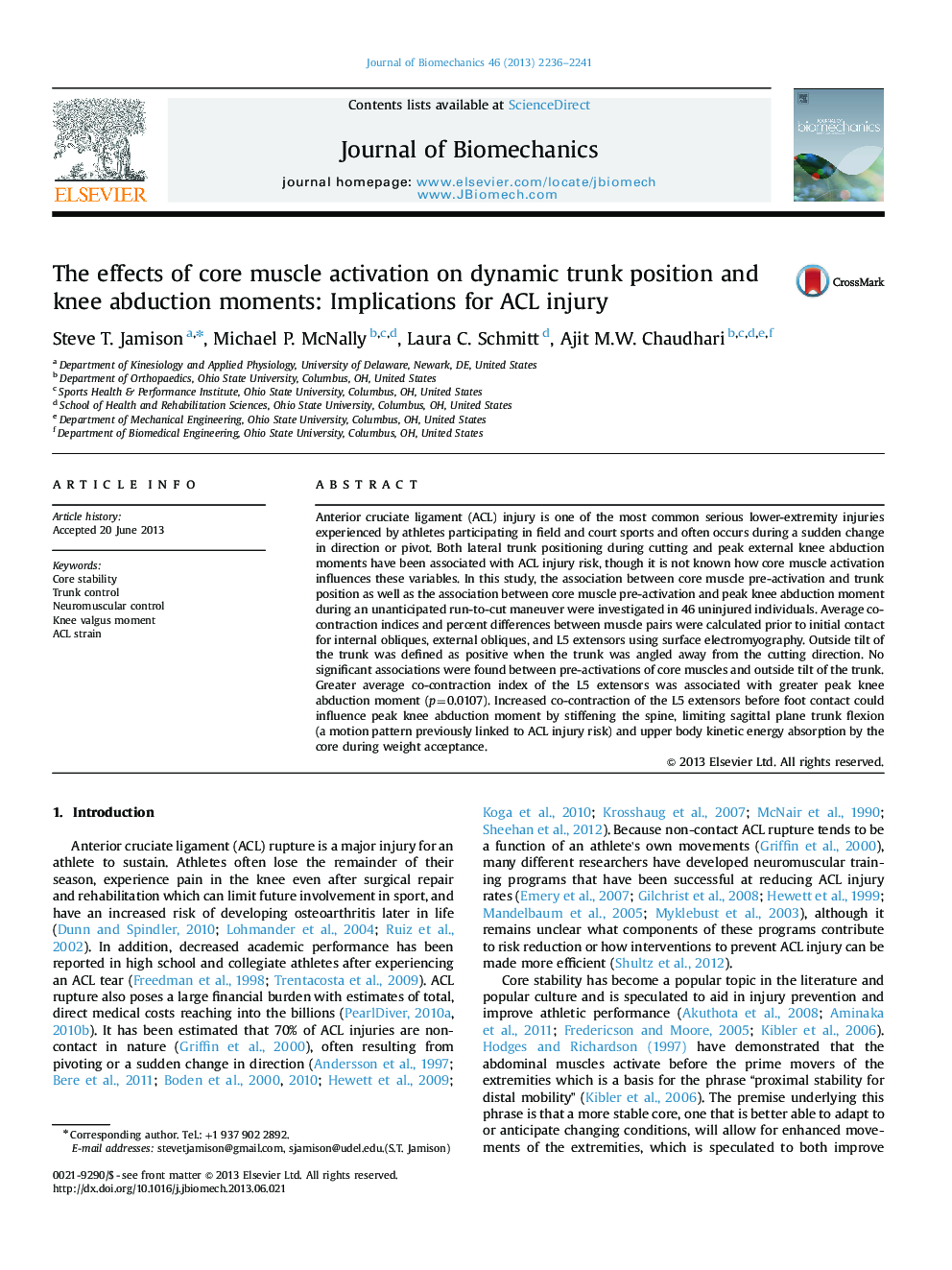| Article ID | Journal | Published Year | Pages | File Type |
|---|---|---|---|---|
| 872215 | Journal of Biomechanics | 2013 | 6 Pages |
Anterior cruciate ligament (ACL) injury is one of the most common serious lower-extremity injuries experienced by athletes participating in field and court sports and often occurs during a sudden change in direction or pivot. Both lateral trunk positioning during cutting and peak external knee abduction moments have been associated with ACL injury risk, though it is not known how core muscle activation influences these variables. In this study, the association between core muscle pre-activation and trunk position as well as the association between core muscle pre-activation and peak knee abduction moment during an unanticipated run-to-cut maneuver were investigated in 46 uninjured individuals. Average co-contraction indices and percent differences between muscle pairs were calculated prior to initial contact for internal obliques, external obliques, and L5 extensors using surface electromyography. Outside tilt of the trunk was defined as positive when the trunk was angled away from the cutting direction. No significant associations were found between pre-activations of core muscles and outside tilt of the trunk. Greater average co-contraction index of the L5 extensors was associated with greater peak knee abduction moment (p=0.0107). Increased co-contraction of the L5 extensors before foot contact could influence peak knee abduction moment by stiffening the spine, limiting sagittal plane trunk flexion (a motion pattern previously linked to ACL injury risk) and upper body kinetic energy absorption by the core during weight acceptance.
